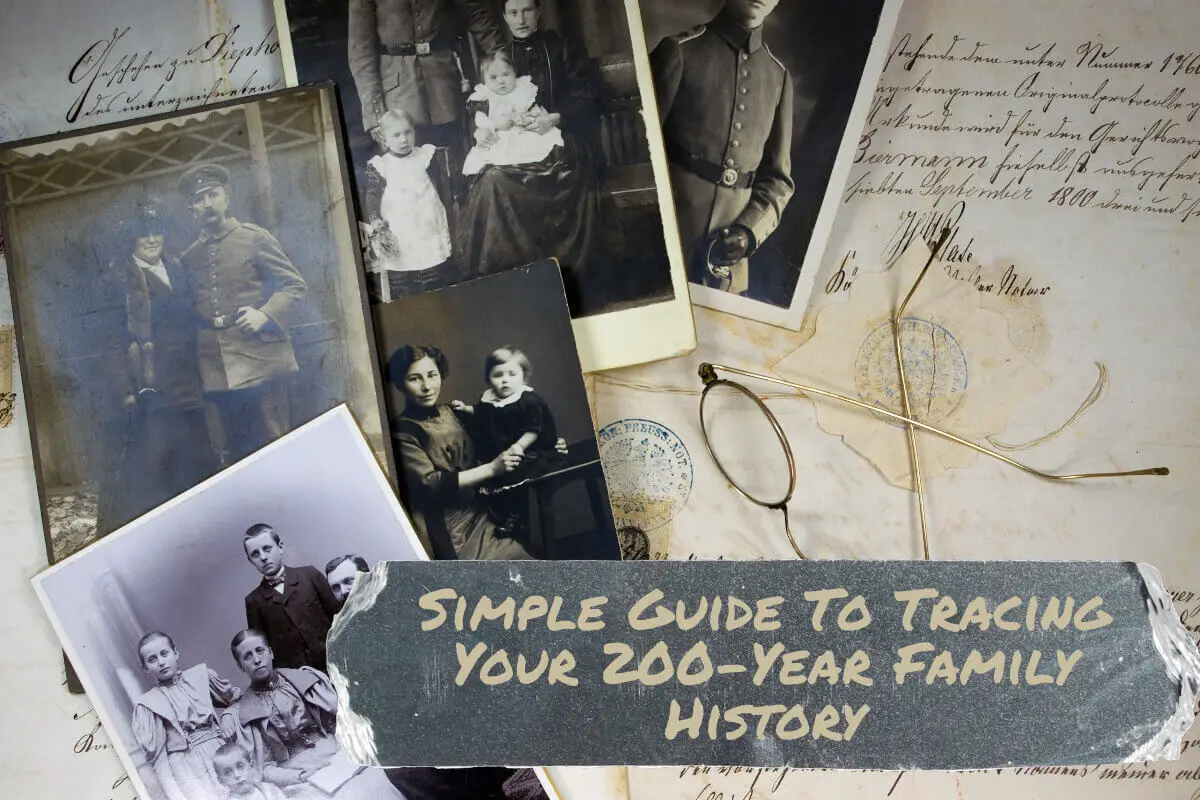If your goal is to delve into your ancestral past, covering a timespan of at least 200 years, there are effective strategies you can employ to ensure a successful research journey.
Nowadays, the abundance of digital tools at our disposal makes exploring your family’s history more accessible than ever. However, the starting point can often be overwhelming. It’s helpful to note that, by a general estimate of 30 years per generation, you’ll need to investigate as far back as seven generations to achieve a 200-year genealogical record.
Table of Contents
- What Is The Easiest Way To Trace Back Family Tree Over 200 Years?
- Related Questions
What Is The Easiest Way To Trace Back Family Tree Over 200 Years?
Tracing your family tree can be a fascinating journey into the past. With today’s digital resources, it’s easier than ever to map out your genealogy spanning hundreds of years. But where do you start? Since a generation is often considered to last about 30 years, tracing your family over 200 years requires researching up to seven generations. A comprehensive guide breaks down this complex task into easy-to-follow steps.

Section 1: Understanding The Generational Span
The initial step in your genealogical journey involves determining the number of generations that span approximately 200 years. Based on the commonly accepted estimate that one generation lasts about 30 years, you’d be delving into seven generations to cover this timeframe.
Why Seven Generations?
If you aim to track your lineage back 200 years, it’s helpful to understand how generations are commonly defined. Typically, a generation is around 30 years, so to cover 200 years; you would be going back seven layers from yourself:
- Parents
- Grandparents
- Great-grandparents
- Great-great-grandparents
- 3x great-grandparents
- 4x great-grandparents
- 5x great-grandparents
Section 2: Initial Data Gathering
There are multiple starting points for launching your exploration into family history. Each approach can serve as a valuable first step in your research journey.
Here are several steps you can do to collect the data:
Speak With Older Family Members
- Start with What You Know: Before diving into online databases, start with what you know. Write down the names, birth and death dates, and any other available information for your immediate family.
- Consult with Elders: Next, talk to the oldest living relatives in your family. This could be grandparents, great-aunts, or great-uncles. They often have a wealth of knowledge, including stories, names, and events you may not know.
- What to Ask: Here’s what you should inquire about:
- Names of ancestors
- Birth and death dates
- Marriage details
- Places of birth, residence, and burial
- Occupation and education
- Siblings
- Any stories or family legends
Family Documents And Keepsakes
- Family Bibles: Older families often have a family Bible where vital events are recorded. These can be gold mines for genealogists.
- Letters and Diaries: These personal documents may contain names and dates, providing context and filling in gaps in your family tree.
- Photographs: Old family photos often have notes on the back. Even if they don’t, older family members may be able to identify people in them.

Section 3: Entering Data Into Online Platforms
After gathering initial information, it’s crucial to have an organized system for storing the data. For this reason, we recommend using specialized family history software to input and manage your collected details.
Selecting A Genealogical Service
- Ancestry.com and FamilySearch.org: These platforms offer excellent user interfaces for constructing family trees and are highly recommended. Both offer free basic memberships to get you started.
- Input Information: Enter the gathered data into your selected platform’s database.
Understanding Hints
- Leaf Hints: These platforms often generate ‘hints’ that can give you more information about your ancestors.
- Verifying Hints: Always cross-reference the hints with the information you already have. Make sure they align to ensure accuracy.
- Other Researcher’s Information – On these platforms, you can also find research from other researchers who may have done some of your family history.
Section 4: Going Beyond Basic Information
Exploring Census And Other Records
- Paid Records: Subscription services often offer access to census records, military documents, and other official reports.
- Free Alternatives: If you don’t want to pay, other websites offer similar information for free. Websites like the National Archives or local history societies can be invaluable resources.
Collaborate With Other Genealogists
- Community Forums: Online communities can offer tips, share resources, and even help verify information.
- Shared Trees: Some users share their family trees publicly, and you might find that your lineage intersects with theirs.

Section 5: Making Connections And Expanding The Tree
One of the advantages of using these platforms is their capability to assist you in locating your ancestors by offering pre-existing data. FamilySearch is a collaborative tool designed to connect you with others conducting family history research, enhancing your collaborative efforts.
- Reach Out: Don’t hesitate to contact people whose trees intersect with yours. You could be cousins several times removed and not even know it!
- Help Others: Once you’ve established a robust tree, you can assist others. This is a beautiful way to give back to the genealogical community.
Tracing your ancestry over 200 years can initially seem daunting, but systematically gathering information, using available resources, and actively engaging with the genealogical community becomes gratifying. Enjoy the journey through time as you connect with your roots and discover your family’s history.
The Hummel Family is a website all about Family History research. We focus on Swedish, German, English, Scottish, and American Genealogy. We also discussed Asia and China, as we had ancestors who spent many years in China.
You are welcome to join us and become part of our community by signing up for our FREE newsletter, The Hummel Family; sign up by clicking here.
Also, check out our Youtube Channel, Family HIstory Buzz, by clicking here.
Related Questions
What Is Eminent Chinese Of The Ch’ing (Qing) Period (1943), by Dr. Arthur W. Hummel?
The editor of the book Eminent Chinese of the Ch’ing Period is my grandfather, Dr. Arthur W. Hummel. But he did not work alone but with the help of two accomplished Chinese scholars, Dr. Chao Ying Fang and Dr. Tu Lein Che Fang. Together, as a team, they spent over 9 years and thousands of hours compiling this significant work about eminent people during the Chinese Qing (Ch’ing) dynasty. This book continues to be used and remains an essential Chinese scholarly work. There is also an online version available.
You can read more about this and Dr. Arthur William Hummel by reading our blog, Eminent Chinese Of The Ch’ing (Qing) Period (1943), Arthur W. Hummel by clicking here.
What Are Some Chinese Proverbs About Life And Living?
My grandparents, Arthur, and Ruth Hummel, lived in China in the early 1900s. During this time, they started to collect and translate Chinese proverbs. We have over 175 of their Chinese proverbs categorized by the subjects they set for them.
You can discover more Chinese proverbs by reading our blog Over 175 Inspirational Chinese Proverbs On Life And Living by clicking here.
Why Did Matthew Start His Gospel With The Ancestors Of Jesus?
Matthew started his gospel with the ancestors of Jesus as he wanted to show the Jews that the Messiah had come as had been prophesied. He also wanted to show Jesus fulfilled the prophecy that the Messiah was a son of David.
You can discover more by reading Why Did Matthew Start His Gospel With The Ancestors Of Jesus? by clicking here.
